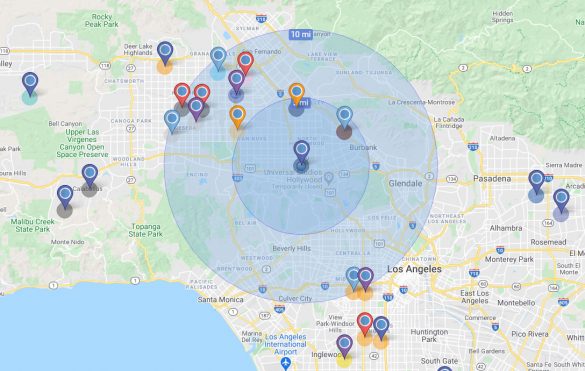
Whether you are opening a new store, planning to move a business branch, or considering options for a new corporate office, conducting a trade area analysis can provide crucial insights to help make your final choice a successful one.
As a state-of-the-art location intelligence software, Maptive lets you analyze geospatial data to identify trends and patterns, map competitors, analyze demographic data, and more.
START USING MAPTIVE WITH A FREE TRIAL
Table of Contents
Location, location, location! If you are searching for the best area to open a new store, you know that selecting the right place can make or break your new business. The location you select needs to help minimize costs, avoid risks, attract employees and customers, and ultimately set your new venture up for success.
That’s where Maptive comes in: our location intelligence software can help you throughout your site selection process by highlighting crucial factors such as:
Retail stores are probably the most common users of this process. When evaluating a new area, store managers have to take into consideration elements like foot traffic and parking availability, but they also have to ensure that their target demographics live and work in the vicinity.
If any of their competitors already have stores in the area, retail leaders will need to consider how likely they are to draw customers away from them based on a competitive analysis not just of the area, but also of their specific product offerings.
Plus, by running a retail trade area analysis, digital and traditional marketing efforts can be more efficient and more narrowly targeted at demographics that are most likely to convert into customers.
All communities deserve adequate access to healthcare facilities, so a trade area analysis should be one of the foundational planning steps when selecting locations for new municipal hospitals and treatment centers.
Private practitioners can also benefit from a full trade area analysis, as it might reveal any abnormal concentration of other private practices in the same medical specialization. Plus, accessibility plays an even more important factor in healthcare location selection, so it’s crucial to make sure a specific area is easy to reach from multiple towns and close to major transportation hubs.
Demographics also play an important part in site selection for healthcare, since a higher concentration of senior citizens might be a good signal for an aspiring geriatrics practice, and vice-versa a younger population might indicate the need for pediatricians and family care.
Regional and local governments are also often in need of running trade area analysis as they plan the opening of new municipal facilities, assess the need for new infrastructure, or launch beautification projects.
Governments need all available data as they evaluate proposals to develop open land and consider the consequences of any changes in urban planning on their community. Areas with high foot traffic might be closed to traffic or converted into urban parks. And if the demographics indicate that most of the population shares similar beliefs regarding the preservation of the environment, governments might even decide to roll-off programs to encourage recycling, tree-planting, and other eco-friendly practices.
Trade area analysis can also help governments as they evaluate the need to create public transportation if their population is highly concentrated in more urban areas or maybe launch new infrastructure projects, such as new roads and bridges, if their communities are more isolated and potentially underserved.
When selecting the perfect location, businesses have to take into consideration that the presence of competing stores might make it tougher to break into an established market. However, depending on the nature of your business, it might be easier to succeed in an area where you already know there is a demand for your products or services, especially if you can offer a more convenient location, newer facilities, or more varied inventory.
How convenient is it for customers and employees to physically reach your location? When you run a trade area analysis you can clearly visualize travel distances and nearby transportation routes, as well as proximity to major highways and town centers. This will also help eliminate potentially ruinous locations that might be hard to reach, lack parking, or that are plagued by frequent traffic and accidents.
Any geographical area is unique, and by running a trade area analysis you can uncover how many potential customers (or existing customers) will be close to your new location. If you have the demographic data of your target audience from an existing store location, you can apply the same filters to analyze the local residents of your new trade area and see if their age, ethnicity, income, and employment status match up.
START USING MAPTIVE TODAY FOR FREE
By running a trade area analysis you take the guesswork out of selecting office and store locations. You can make informed decisions, backed but reliable data. This can help in your long-term success by defining your primary trade area and secondary trade area, ultimately boosting your retail sales and aiding your marketing efforts.
Avoid troubles with inventory planning from the get-go. Trade areas and market analysis can help you be successful in the long run by anticipating how many customers you will have, and how much inventory turnover you can expect. From there you can also analyze how easy it will be for trucks to reach your location, and how convenient for personnel to fulfill their shifts.
Nearby stores can reveal the market potential for a specific location, but only a full competitive analysis of a retail trade area can help you make an informed decision. Are their store locations more convenient? Do your target consumer demographics overlap? Are your products and services more attractive than theirs? Your ability to draw customers starts with understanding the market opportunities, including getting to know your competitors up close.
Digital marketing can be incredibly efficient at targeting specific demographics based on interests and behavioral patterns. By running a trade area analysis with Maptive, you can maximize every dollar you spend on marketing campaigns by targeting only a specific geographic area, nearby store’s existing customers, and specific demographic profiles instead of the broader population. Data from a trade area analysis can also help with traditional marketing, helping you design better store layouts, plan product placement, and advertise in local media outlets.
Maptive’s location intelligence software can help you add layers to maps powered by your own sales data, demographic data, or other key components to your research. We draw on geographic information systems like Google Maps to help you create powerful maps and develop rich insights.
With hot spot heat maps available at your fingertips, you can identify where you’re succeeding—and where you need to open locations. All from your spreadsheet data. Visualize and track your concentrations of data, identify hot spots, and discover your cold spots.
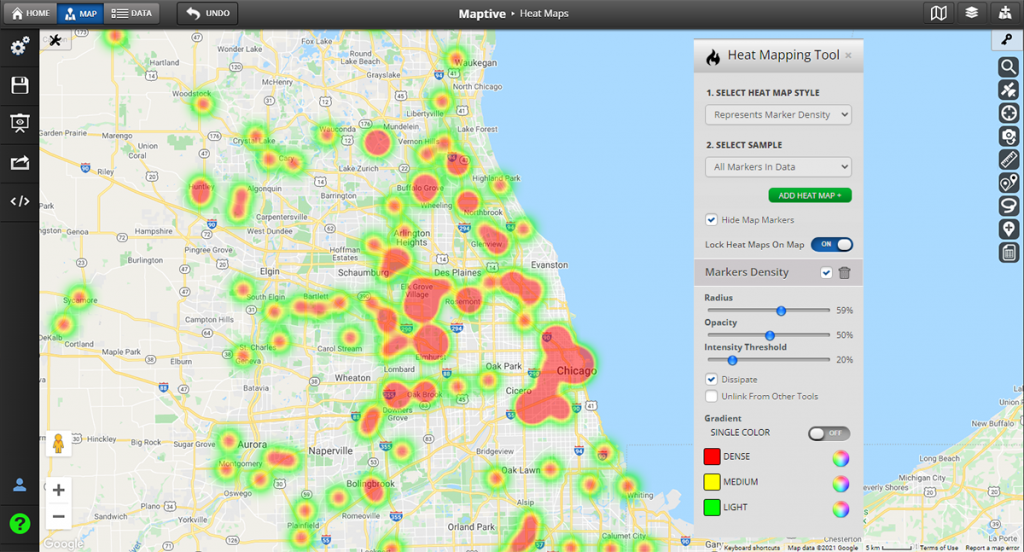
Your site selection map should be rich with layers of important data, but without the right tools, it’s hard to visualize so much information. With Maptive’s Grouping Tools you can simply color and customize your markers by category, then filter them for easy retrieval.
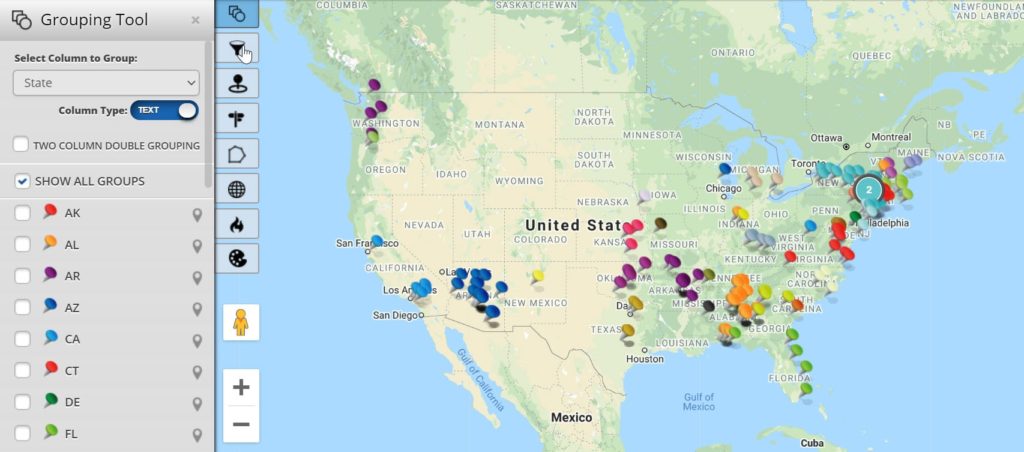
When it comes to employees, customers, and delivery trucks, time and stress behind the wheel can have an enormous impact on your bottom line. Maptive’s dynamic duo of driving intelligence tools—the Driving Radius Maps and Drive Time Polygon Tools—can help you track how far you can reach, where you can go, and where your business should be—with real-time data.
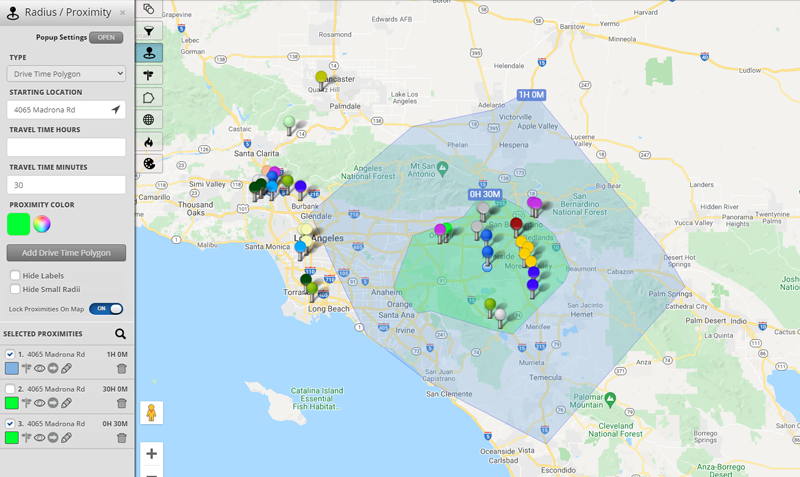
No business location map is complete without demographic data. With Maptive, you have access to the latest U.S. Census Demographic Data, so you can get deeper insights on your chosen location’s population density, median household income, education, and more.
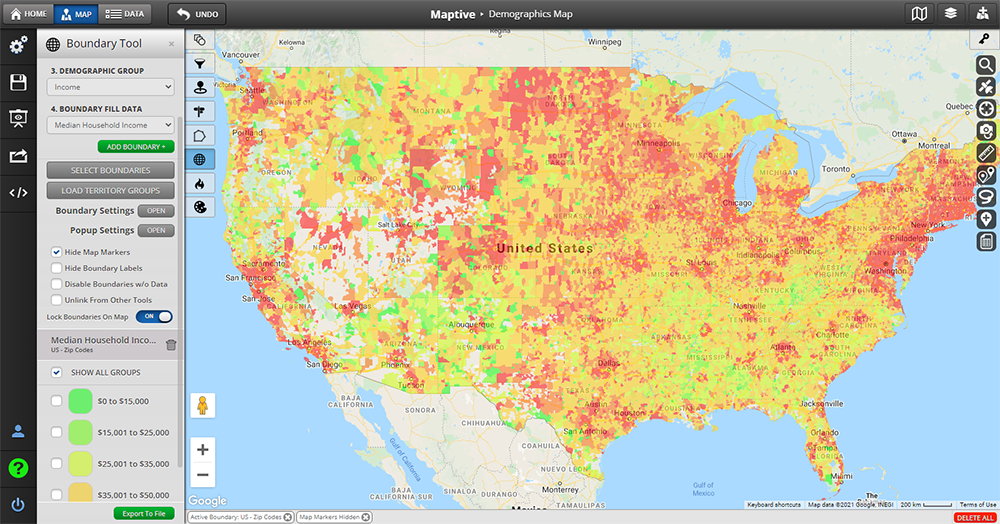
Maptive’s location intelligence can help companies of all sizes make more informed decisions with powerful tools for trade area analysis. No more guesswork. Analyze potential locations and set yourself up for success.
GAIN YOUR COMPETITIVE ADVANTAGE. START USING MAPTIVE TODAY
Brad Crisp is the CEO at Maptive.com, based in Denver, CO and born in San Francisco, CA. He has extensive experience in Business Mapping, GIS, Data Visualization, Mapping Data Analytics and all forms of software development. His career includes Software Development and Venture Capital dating back to 1998 at businesses like Maptive, GlobalMojo (now Giving Assistant), KPG Ventures, Loopnet, NextCard, and Banking.
